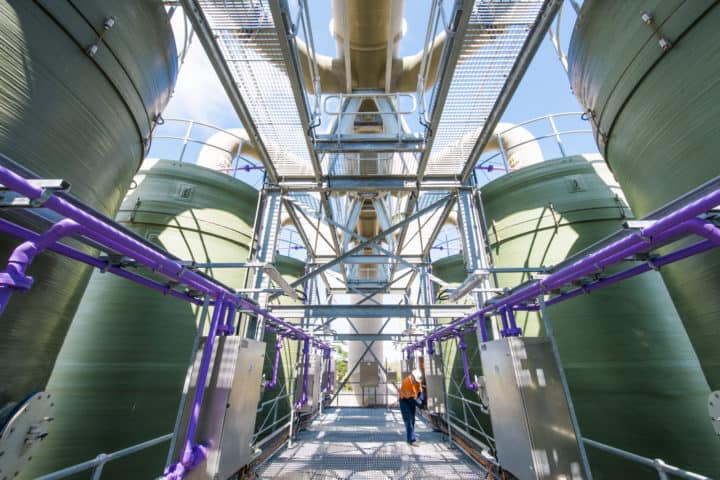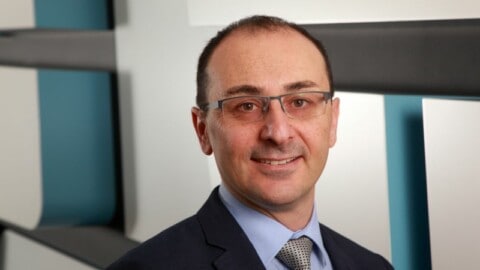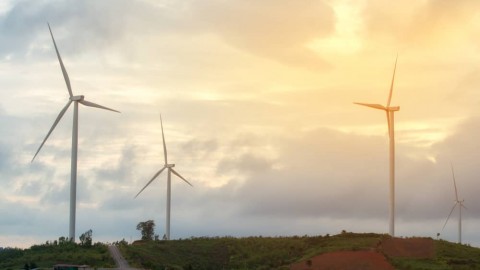By David Ryan, Executive General Manager, Service Delivery, Melbourne Water
Located in Werribee, in Melbourne’s south west, Melbourne Water’s Western Treatment Plant is a world leader in technical and environmental innovation.
Today, the Western Treatment Plant (WTP) treats more than half of Melbourne’s sewage, around 480million litres per day, and generates almost 40billion litres of recycled water a year.
It is also a Ramsarlisted wetland of international significance and a leader in renewable energy generation. Operations on the 10,500 hectare site (then known as Werribee Farm) began in 1897, when the first homes were connected to Melbourne’s sewerage system.
Since then, the treatment process has undergone extensive changes in order to cost effectively meet changing requirements, and in doing so a number of milestones have been achieved that are testament to the innovation taking place at this facility.
A history of innovation
WTP’s history reaches back almost 125 years, having been built when the Melbourne and Metropolitan Board of Works was set up to manage the city’s supply of water and treatment of sewage.
Under the guidance of chief engineer William Thwaites, construction of a sewerage system began at Werribee in 1892, with a pumping station at Spotswood.
Just five years later, the first Melbourne homes had their effluent transported all the way to Werribee with just a single flush.
Treatment on the site was solely via land and grass filtration until the 1930s, when Lake Borrie, the first lagoon system, was constructed.
More lagoon systems followed in the 1980s and 1990s to enable treatment for the growing population. While land and grass filtration is no longer used on the site, each of the lagoon systems is still in use today.
Today, the WTP treatment process is a unique combination of lagoons and activated sludge, with methanerich biogas collected from upfront covered anaerobic lagoons and converted on site to power.
The maximisation of natural lagoon processes in harmony with more mechanised processes enables the needs of the receiving environment to be met while maintaining WTP’s status as one of the lowest cost treatment plants in the world.
Leading the way in sewage treatment
The design of the lagoon systems developed over time and the more recent designs incorporate deeper sections at the upstream end of the first pond to facilitate anaerobic treatment of incoming sewage.
Anaerobic treatment provides removal of solids and the organic component without requiring significant energy input or generating much waste sludge.
From the early 1990s, these deep anaerobic sections of the first pond have been fitted with huge gas tight covers (the size of the MCG) that collect the methanerich biogas and odour that is produced by the anaerobic treatment.
This biogas is converted on site to electricity, meeting approximately 95 per cent of the plant’s energy needs.
The cover design has also improved over time, with the most recent completed cover replacement making use of a segmented design that allows for incremental removal and renewal of the asset, enabling a more continuous biogas supply and limiting odour release during works.
In 2001 and 2004, at a cost of approximately $160million, two of the lagoon systems were enhanced with activated sludge plants to provide a consistent, year round removal of nitrogen in response to the outcomes of the extensive CSIROled Port Phillip Bay Environmental Study (PPBES).
One of the key findings of the PPBES was that Port Phillip Bay is nitrogenlimited and, consequently, nitrogen loads needed to be reduced by 1,000 tonnes per annum to prevent algal blooms.
The Class A recycled water plant, consisting of ultraviolet and chlorine disinfection, was commissioned in 2005 and was the first plant in Victoria to produce recycled water to a Class A standard, which is the highest class of recycled water and is safe to use for a range of nonpotable purposes.
The plant produces high quality recycled water for nearby farms, parks and public open spaces. Class C recycled water is sourced directly from lagoons and is used onsite to irrigate pastures, manage soil salinity and maintain the health of the Ramsarlisted wetlands.
More than ten years later, significant population growth in Melbourne is driving the next set of treatment capacity augmentation projects.
In alignment with WTP’s history of innovation, Melbourne Water has facilitated the exploration of lower cost novel treatment processes suitable for implementation as part of this augmentation.
Further, an emerging treatment technology with potential to cut energy use by 30 per cent is under investigation, with a view to implementation as part of the renewal of one of the existing activated sludge plants.
Continuous improvements
It takes a lot of energy to deliver safe water, remove and treat sewage, and manage drainage and waterways across Melbourne. We’re always looking for opportunities to improve our energy efficiency and generate more renewable energy from our operations.
WTP has been leading the way in renewable energy since 2005 with the construction of the existing onsite power generation facility.
The plant is nearly energy selfsufficient, and can generate about 95 per cent of its own annual electricity needs. It can also export electricity to the grid, offsetting use at Melbourne Water’s other sites.
Works are under way to expand operations so the plant can produce more energy than it needs and become a net energy exporter.
Capturing and using biogas to generate electricity also significantly reduces greenhouse gas and odour emissions – we have prevented emitting over 80,000 tonnes of carbon dioxide per year, which is equivalent to taking about 19,100 cars off the road.
Since 2005, over 500,000 megawatt hours of renewable electricity have been generated at the plant, preventing the emission of over 575,000 tonnes of greenhouse gases.
Biodiversity in action
We’ve come a long way in how we process and treat Melbourne’s sewage since 1892, and WTP has come to be known as much more than a sewage treatment site.
The site has also become known as a haven for wildlife; in 1921, parts of Port Phillip Bay and the Bellarine Peninsula, including WTP, were declared a sanctuary for native animals. In 1982, the plant was declared a Ramsar site, internationally recognised for its wetland habitat.
The plant is now considered one of Australia’s most significant wetlands, second only to Kakadu in the Northern Territory, and attracts over 280 species of birds.
Moving to a modern era
This year marks the 125th anniversary of Melbourne’s water industry. Innovation is at the heart of what we do at Melbourne Water and is central to our vision to enhance life and liveability in Melbourne, and beyond.
WTP is a world leader in technical and environmental innovation, and has played an integral role throughout the history of Melbourne’s water industry. We will continue to reach for innovation in the way we remove and treat Melbourne’s sewage.
Melbourne Water continually seeks input from stakeholders and the community on the future of WTP, and we’re continually working to improve how we operate and deliver services to benefit both the community and the environment.
The Western Treatment Plant Future Land Use Plan ensures the site’s principal value of providing low cost, energy neutral, natural systemsbased treatment will continue into the future as Melbourne’s population continues to grow.
Agriculture and biodiversity conservation activities will continue to be enhanced, and complementary opportunities such as codigestion, ecotourism and recreation will be investigated and implemented.
Melbourne Water’s objective is to maximise the long term economic, social and environmental values of WTP for the benefit of the community and state as a whole.
We will lead the development of the site and continue to pursue innovative technologies that provide financial, social and environmental benefits.
Collaboration with others is essential to delivering liveability benefits, and Melbourne Water will explore partnerships and engage the community and stakeholders to ensure the site value is continually improved.
















